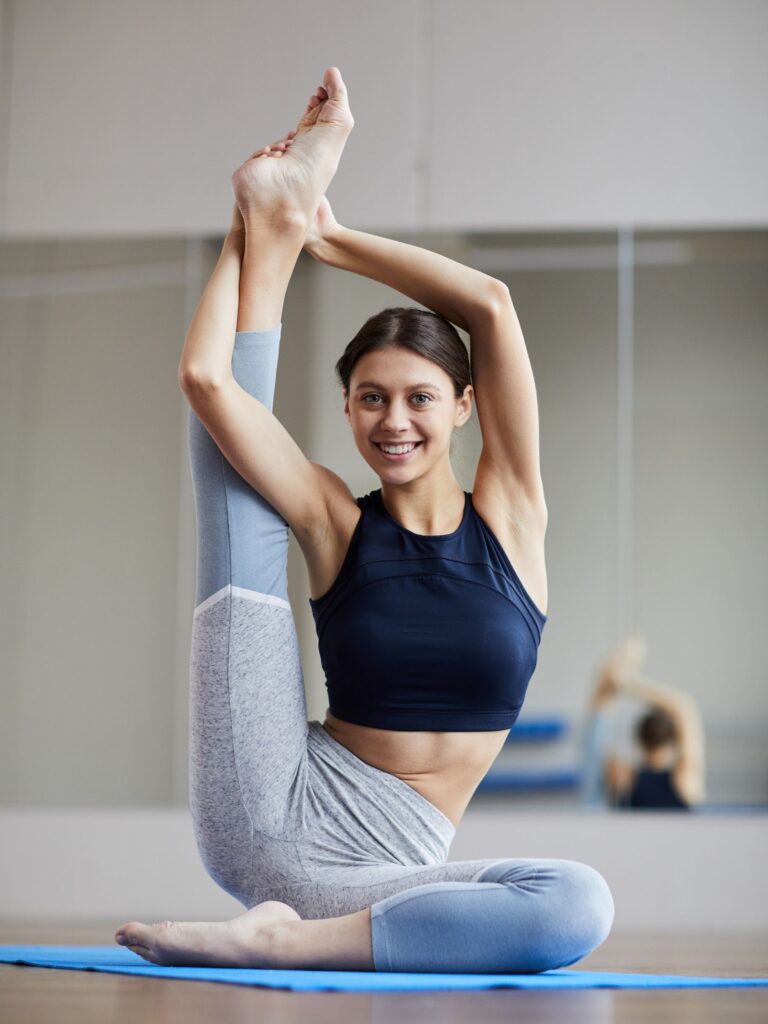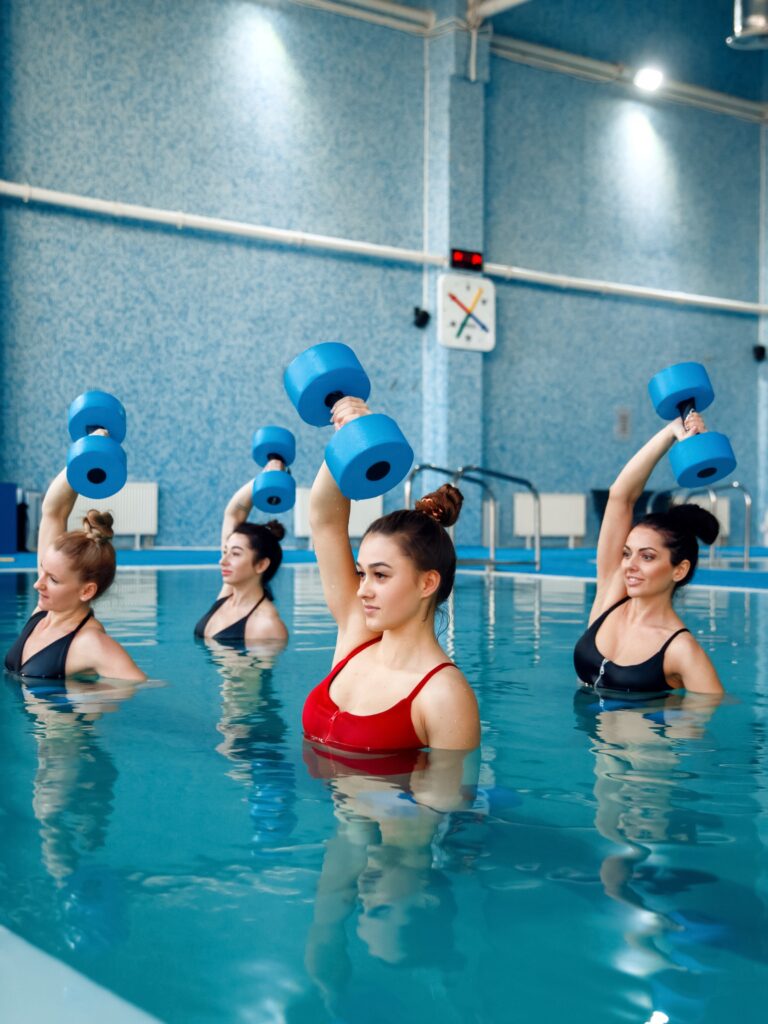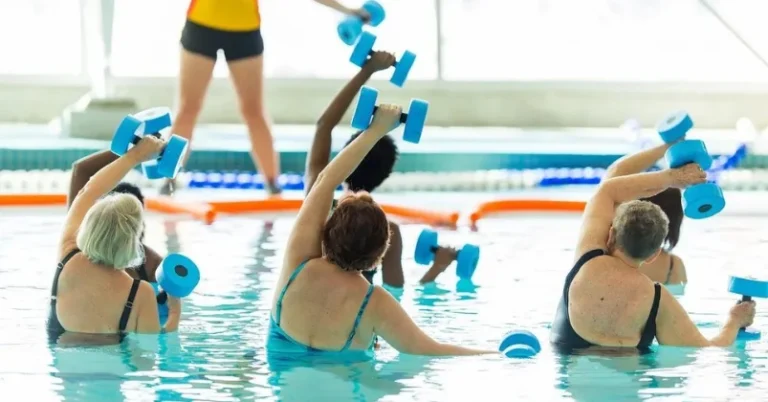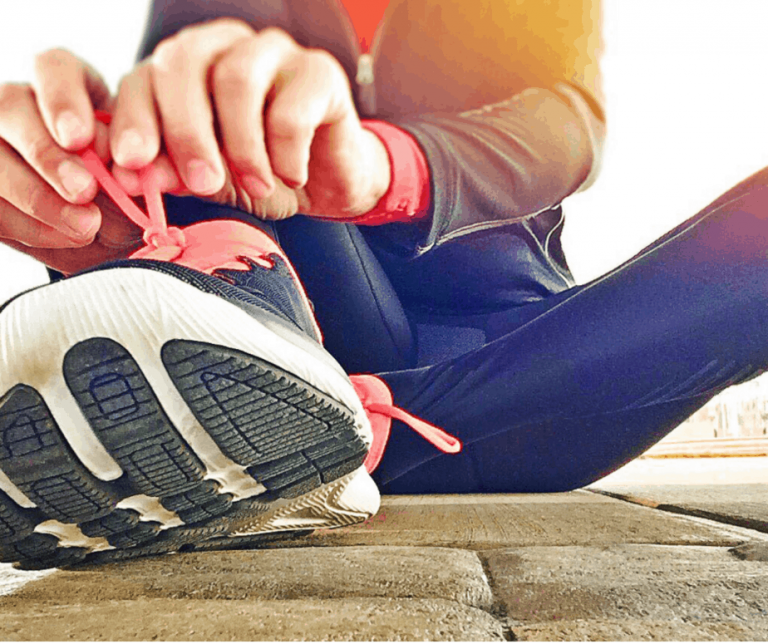Enhance Flexibility in the Water for Chronic Conditions: A Comprehensive Guide
Individuals experiencing different chronic conditions like arthritis, fibromyalgia, and multiple sclerosis usually feel constrained in movement due to pain in their joints. Water exercise is effective in enhancing flexibility, strength, and cardiovascular fitness since the activity is low-impact. Aquatic exercises have proved to reduce pain and help improve physical functions in individuals with chronic conditions, making them an ideal option for improving the overall health of an individual.
The advantages of aquatic-based exercises are the fact that the buoyancy of water may reduce joint trauma, making them more flexible with a greater range of motion. The resistance created by the water challenges muscles and enhances cardiovascular fitness. Water-based exercises can be modified for different activity levels; hence, options are quite versatile for people with chronic conditions.
Understanding Flexibility and Chronic Conditions

Flexibility refers to the range of motion of joints and muscles and is an important component of physical fitness. It is an avenue for attaining or continuing mobility and preventing injury, which can be particularly vital for individuals with chronic disorders that consist of arthritis, osteoarthritis, joint pain, and inflammation.
Chronic diseases make the musculature stiff and painful to move, hence limiting activities of daily living. Symptoms can be managed through regular exercise, including flexibility exercises, thereby improving overall health and well-being.
Aquatic exercises, being low-impact, minimize joint stress and, therefore, are especially great for people with chronic disorders. The flexibility exercises-stretching and tai chi-conducted in water can be very useful for improving the mobility of the joints and reducing joint stiffness.
It is important to note that flexibility exercises should not be performed without caution and very critical consideration among persons with chronic conditions. Overstretching or an incorrect technique may lead to injury and increased symptoms.
Flexibility is crucial for mobility and preventing injury in general, especially in chronic conditions. Aquatic exercises can provide a low-impact platform for exercises that enhance the range of joint motion and reduce stiffness. Such exercises, however, need to be made with great care and under guidance by healthcare professionals in order not to cause injury.
The Role of Water in Enhancing Flexibility

Water is an excellent medium for the facilitation of flexibility, especially for chronic disorders. The buoyancy of water decreases the impact on the joints, hence serving well for exercises that can be done with minimal stress on the body. Swimming, aquatic exercise, water exercise, water walking, and other water exercises have proved to be efficient in the rise of flexibility.
Such resistance, like that of water, will enhance the muscles and make them more flexible. The resistance of water is directly proportional to the speed of movement-the faster the movement, the greater the resistance. This resistance is important in cases where the muscular systems of people with chronic conditions are weakened.
Indication for both shallow and deep water exercises, depending on one's needs. Shallow water exercises would be recommended for those starting or with limited mobility. These can be taken in waist or chest-deep water and include activities like walking, marching, and leg lifts.
Water exercises in deep water are more difficult, the exercises also require the use of flotation devices. They are ideal for those wanting to increase the challenge of their workout. Jogging, jumping jacks, and cross-country skiing are a few examples of deep-water exercises.
Water aerobics could also be utilized for stretching and relaxation. The buoyancy of water allows more freedom of movement, which makes the stretching of muscles a bit easier. Relaxation and stress relief can also be achieved with water exercises; the soothing effect of water helps to reduce tension and anxiety.
Conclusion Water is an ideal medium to enhance flexibility among people with chronic conditions. Other forms of water exercises to enhance flexibility, muscle strength, and health in general include swimming, aquatic exercise, water exercise, and water walking. Water exercises either in shallow or deep water can be modified to meet the needs and goals of an individual.
Benefits of Water-Based Exercises
Water-based exercises offer a variety of physical and mental health benefits, making them a great choice for individuals with chronic conditions. Here are some of the key benefits of water-based exercises:
Low-Impact Exercise
Water-based exercises are low-impact, meaning they are gentle on the joints and muscles. This makes them an ideal choice for individuals with chronic conditions such as arthritis, fibromyalgia, or multiple sclerosis, who may experience pain and discomfort during high-impact activities.
Improved Range of Motion
Water-based exercises can help improve range of motion and flexibility. The buoyancy of the water reduces the effects of gravity on the body, allowing for greater movement and flexibility. This can be particularly beneficial for individuals with conditions that affect joint mobility, such as osteoarthritis.
Increased Muscle Strength and Endurance
Water-based exercises can also help increase muscle strength and endurance. The resistance of the water provides a natural form of resistance training, helping to build muscle and improve overall physical fitness.
Improved Balance and Coordination
Water-based exercises can also help improve balance and coordination. The instability of the water requires the body to engage more muscles to maintain balance, helping to improve overall stability and coordination.
Cardiovascular Fitness
Water-based exercises can also provide a cardiovascular workout, helping to improve overall cardiovascular fitness. Activities such as water aerobics or swimming can help increase heart rate and improve circulation, which can be particularly beneficial for individuals with conditions such as hypertension or heart disease.
Overall, water-based exercises offer a safe and effective way for individuals with chronic conditions to improve their physical fitness and overall health. By providing low-impact, resistance-based exercise, water-based exercises can help improve muscle strength, range of motion, balance, and cardiovascular fitness, making them an ideal choice for individuals of all ages and abilities.
Specific Water Exercises for Flexibility
Aquatic exercise is a great way to enhance flexibility, especially for those with chronic conditions. Here are some specific water exercises that can help improve flexibility:
Stretching Exercises
Stretching exercises are great for improving flexibility. Stretching exercises are easier to perform in water because the water provides buoyancy and support. Some effective stretching exercises in water include:
- Arm Circles: Stand in chest-deep water with your arms extended to the sides. Slowly move your arms in a circular motion, first clockwise and then counterclockwise.
- Leg Swings: Stand in chest-deep water and hold onto the side of the pool. Swing one leg forward and backward, and then repeat with the other leg.
- Neck Stretches: Stand in chest-deep water and slowly turn your head from side to side, and then up and down.
Movement and Core Exercises
Movement and core exercises can help improve flexibility and strengthen core muscles. Some effective water exercises include:
- Squat Jumps: Stand in chest-deep water and squat down, then jump up as high as you can. Repeat for several sets.
- Forward Lunge: Stand in chest-deep water and take a step forward with one foot, bending your knee to a 90-degree angle. Hold for a few seconds, then repeat with the other leg.
- Leg Lifts: Stand in chest-deep water and hold onto the side of the pool. Lift one leg to the side, keeping it straight, and then lower it back down. Repeat with the other leg.
Strengthening and Flexibility Exercises
Strengthening and flexibility exercises can help improve posture, reduce back pain, and increase overall flexibility. Some effective water exercises include:
- Lunges: Stand in chest-deep water and take a step forward with one foot, bending both knees to a 90-degree angle. Hold for a few seconds, then repeat with the other leg.
- Glute Squeezes: Stand in chest-deep water and place a pool noodle between your legs. Squeeze your glutes together, hold for a few seconds, and then release.
- Plyometric Exercises: Stand in chest-deep water and jump up and down as fast as you can. This exercise can help improve flexibility and balance.
Overall, water exercises can provide a low-impact and effective way to improve flexibility for those with chronic conditions. Incorporating these exercises into your routine can help you achieve better flexibility and overall health.
The Impact of Chronic Conditions on Flexibility
Flexibility is grossly hampered by chronic ailments, including diabetes, cardiac diseases, high blood pressure, asthma, dementia, osteoporosis, depression, and anxiety. It is in relation to the fact that these illnesses may eventually bring about the rigidity of any part of the body, pain, or limited movement, hence curtailing the rate at which an individual continues with daily activities.
Type 2 diabetes can affect the nerves and blood vessels, thereby reducing flexibility because of high blood sugar levels. Heart diseases and high blood pressure do make the arteries and blood vessels stiff, hence reducing flexibility due to reduced free flow of blood.
Asthma is the most common chronic lung condition that influences flexibility by reducing lung function and hence impeding the ability to take deep breaths. This can limit the oxygen supply to the muscles, making them stiff and less flexible.
Two other conditions of old age are dementia and osteoporosis, which also influence flexibility. Muscle weakness and loss of density in bones are some of the symptoms of these conditions, which increase the risks of falls and hence make the victim less mobile.
Anxiety and depression will affect flexibility because stress and anxiety may develop muscle tension that could restrict a person's range of motion.
Overall, chronic conditions can cause flexibility that may make it difficult to carry out certain activities day in and day out, thereby affecting quality of life. Individuals with chronic conditions need to establish a plan with their provider on how best to maintain or improve flexibility through exercise and other interventions.
Safety and Precautions in Water Exercises
Water exercises can be a gentle yet effective mode of improving flexibility and mobility for people with chronic conditions. However, there are ways to keep safe from injury or falls that one needs to take care of.
Following are some safety tips to remember during water exercises:
- Always consult your physician or physical therapist before starting a new exercise program.
- If you are not a strong swimmer or if you have difficulties with balance in the water, wear a flotation belt or other flotation device.
- Wear proper footwear to avoid slipping on wet surfaces.
- Start your exercises at a low intensity and gradually increase the intensity and duration as your body becomes more robust and flexible.
- Be considerate of those around you, and try to avoid busy and crowded areas of the pool.
- Stay hydrated, and rest when needed.
- Listen to your body and stop exercising if pain or discomfort occurs.
In addition to these general safety tips, specific precautions based on certain chronic conditions are of utmost importance. For example,
- Those individuals with arthritis must avoid heavy joint pressure exercises that might induce jumping and running.
- It would also be important to note that individuals with conditions of the heart and lungs should avoid exercises that require holding their breath or putting extreme stress on the heart and vessels.
- It is also recommended that individuals with impairment in balance/coordination make use of a flotation device and also avoid exercises that require sudden movements.
With these precautions in place and with the assistance of a competent physical therapist, flexibility and mobility can safely and effectively be improved for individuals with chronic conditions through water-based exercises.
The Role of Nutrition and Hydration
Thus, nutrition and hydration are relevant for comfort in water to be able to develop the flexibility of the body for chronic conditions. There is a high need for good hydration in individuals with chronic conditions such as arthritis or fibromyalgia because this will enable them to have good joints and muscles.
Water is considered the most important nutrient within the body, as it regulates body temperature, gets rid of waste products, and transports nutrients. The daily recommendation is at least eight cups of water per day, but more according to age, gender, and activities.
In addition to water, proper nutrition is equally important to retain flexibility in water. A diet focused on fruits, vegetables, whole grains, and lean protein will give your body the necessary elements to maintain good musculature and joints. Certain nutrients, such as calcium and vitamin D, are great in maintaining healthy bones and fighting ailments like osteoporosis.
Equally important is avoiding those foods that can cause inflammation and aggravate chronic conditions. Limit or avoid processed foods, sugary drinks, and foods high in saturated and trans fats, while focusing on anti-inflammatory foods. Examples include fatty fish, nuts, and leafy greens.
Nutrition and hydration are very critical to keeping one flexible even in water, especially for those suffering from chronic conditions. Adequate intake of water coupled with a good diet will help the body obtain all the required nutrients that will help in maintaining healthy joints and muscles while avoiding certain foods that may trigger the inflammation of chronic conditions.
Incorporating Water Exercises into Daily Routine
Water exercises are a great way to enhance flexibility, especially for individuals with chronic conditions. Incorporating water exercises into your daily routine can be easy and fun. Here are a few ways to get started:
1. Join a Water Exercise Class
Joining a water exercise class can be a great way to start incorporating water exercises into your daily routine. These classes are typically offered at local gyms, community centers, and even some pools. In these classes, you will be guided by a trained instructor who will help you perform exercises that are safe and effective for your body.
2. Walk in the Water
Walking in the water is a low-impact exercise that can be done by individuals of all ages and fitness levels. It is a great way to improve flexibility and cardiovascular health. To get started, simply walk in the shallow end of the pool, gradually increasing the depth as you become more comfortable.
3. Incorporate Water Exercises into Your Workouts
If you already have a workout routine, consider incorporating water exercises into your regimen. For example, you can do squats, lunges, and arm exercises while standing in the water. These exercises will help improve your strength and flexibility.
4. Try Water Yoga
Water yoga is a low-impact exercise that is great for individuals with chronic conditions. It combines the benefits of yoga with the resistance of water. Many local gyms and community centers offer water yoga classes.
5. Water Exercises for Athletes
Water exercises can also be beneficial for athletes. They can help improve flexibility, agility, and balance, which are all important for sports performance. Incorporating water exercises into your training regimen can help you become a better athlete.
6. Water Exercises for Older Adults
Water exercises are also great for older adults. They are low-impact and can help improve balance, flexibility, and cardiovascular health. Many community centers offer water exercise classes specifically for older adults.
7. Water Exercises for Recovery
Water exercises can also be beneficial for individuals recovering from injuries or surgeries. They are low-impact and can help improve flexibility and strength without putting too much stress on the body. Talk to your doctor or physical therapist to see if water exercises are right for you.
Incorporating water exercises into your daily routine can be easy and fun. Whether you join a water exercise class, walk in the water, or incorporate water exercises into your workouts, you can improve your flexibility and overall health.
Conclusion
In conclusion, water-based exercise is an effective method for improving flexibility in individuals with chronic conditions. Several studies have reported positive outcomes in flexibility after participating in aquatic exercise programs.
For example, a study published in the European Review of Aging and Physical Activity found that water exercise can improve flexibility in older adults with chronic conditions. The study concluded that water exercise is an effective method for improving flexibility in this population.
Another study published in the Journal of Physical Therapy Science found that water exercise can improve flexibility in individuals with knee osteoarthritis. The study found that water exercise was more effective than land-based exercise in improving flexibility in this population.
Overall, water-based exercise is a promising intervention for improving flexibility in individuals with chronic conditions. It is a low-impact form of exercise that can be easily modified to meet the needs of individuals with varying abilities. Additionally, water exercise can provide a supportive and comfortable environment for individuals with chronic conditions who may experience pain or discomfort during land-based exercise.
It is important to note that while water exercise is effective in improving flexibility, it should not be used as a substitute for medical treatment or physical therapy. Individuals with chronic conditions should always consult with their healthcare provider before starting any exercise program.
FAQs
Aquatic therapy can be used to treat a variety of conditions, including chronic pain, arthritis, fibromyalgia, multiple sclerosis, and other neurological disorders. It can also be beneficial for those recovering from surgery or injuries, as well as individuals with balance or mobility issues.
Common aquatic therapy techniques include water aerobics, swimming, pool walking, and resistance exercises using equipment such as noodles, weights, and flotation devices. Hydrostatic pressure, buoyancy, and resistance from the water can all be used to enhance the effects of these exercises.
Aquatic therapy can be more effective than land therapy for certain conditions due to the buoyancy and resistance provided by the water. It can also be less stressful on joints and muscles, making it a good option for individuals with chronic pain or limited mobility. However, land therapy may be more appropriate for certain types of injuries or conditions.
Warm water physical therapy can help to increase circulation, decrease pain and inflammation, and improve range of motion. The warmth of the water can also help to relax muscles and reduce muscle spasms, making it a good option for individuals with chronic pain or muscle tension.
One potential disadvantage of aquatic therapy is the cost, as access to a pool or aquatic therapy facility may be limited or expensive. Additionally, not all individuals may be comfortable in the water or may have difficulty accessing the pool due to mobility issues.
Water-based exercises can be a beneficial form of physical activity for individuals with chronic diseases such as diabetes, heart disease, and arthritis. These exercises can help to improve cardiovascular health, increase strength and flexibility, and reduce the risk of falls and injuries. However, it is important to consult with a healthcare provider before starting any new exercise program.








